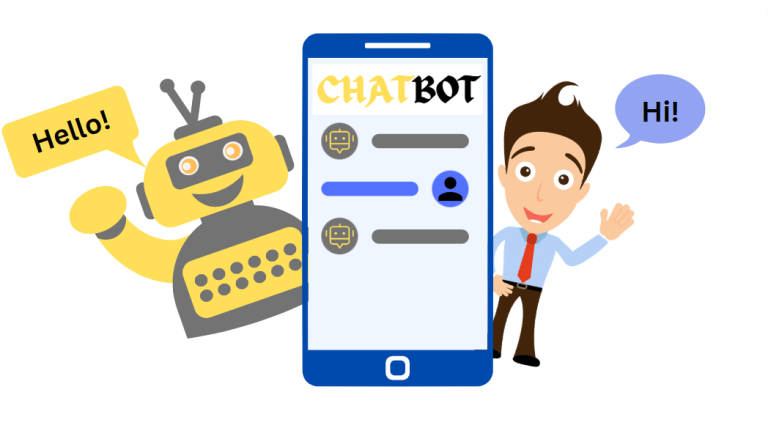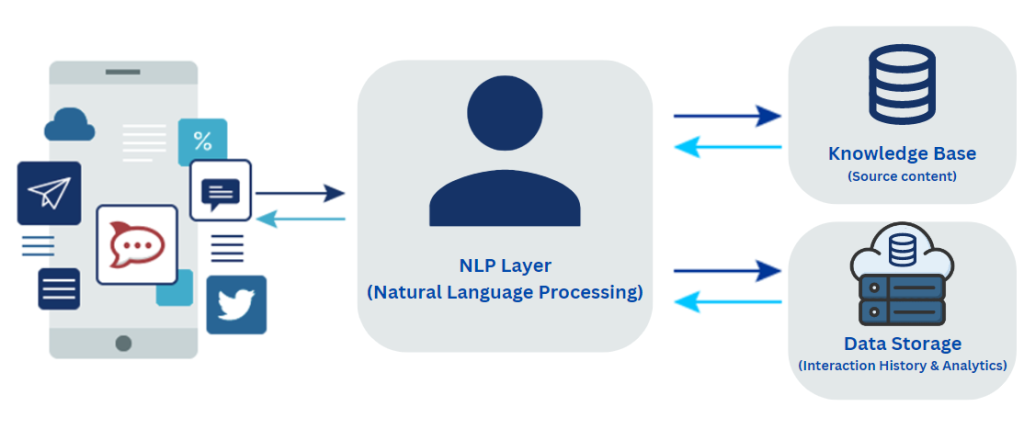Chatbots have evolved significantly in the last few years. They have gone from being a novelty to becoming a necessity in many industries. They are now capable of carrying out a lot more tasks than they were before. Moreover, companies nowadays started using chatbots not just for marketing their products but also as personal assistants.
Chatbots are a great way to engage with customers and provide them with a personalized and interactive experience. So, many companies have started using it to increase their customer service efficiency, provide better customer experience, and improve their marketing efforts.

What is a Chatbot?
Chatbots are a form of AI that is programmed to interact with humans through natural language. Organizations uses chatbots in customer service, personal assistance, and other industries.
You can find chatbots on websites, mobile apps, and even within social media platforms such as Facebook Messenger or Twitter DMs. There are many different types of chatbots. But the most common one is a conversational bot, which has a series of pre-written responses to answer questions or provide information when prompted by the user.
Chatbots types and their working
Chatbot design is basically to convincingly simulate how a human would behave as a conversational partner, thereby passing the Turing test. These are often called Natural language processing engines.
Chatbots are usually programmed to respond to keywords or phrases in a conversation and then provide the user with the corresponding response. They can also be programmed to recognize when there is no response and then initiate a new question or statement.

• Rule-based chatbots (click bots)
Rule-based chatbots are based on predetermined rules and follow a predictable process. If a user tries to stray outside these pre-selected questions, they can’t seem to get the same results.
Therefore, it’s essential to design the rule-based chatbot in a versatile way. Different formats like images, GIFs, audio, and videos can help to achieve the necessary versatility. Compared to AI bots, click bots are cheaper and easier to get up and running. They’re also quicker to put together, so work on your idea begins as soon as possible.
• AI-based chatbots
Chatbot that uses artificial intelligence can have intelligent conversations with their customers. Their AI and machine learning (ML) allow this to happen.
Have you ever wondered what contextual chatbots are? Contextual Chatbots use Machine Learning and Artificial Intelligence to remember previous conversations, which is far more advanced than the three bots discussed before. They are capable of contextual awareness, can recognize when you’re asking for advice about a subject, and provide favorable alternatives.
• Hybrid model
Businesses are very much in love with AI chatbots and the sophistication they have. But that doesn’t mean they have the skills or enough data to support them. That’s why many choose to use the hybrid model. A hybrid chatbot model means the positives of both rule-based and AI-based bots. Its simplicity offers a straightforward experience, while its complexity can offer unique interactions.
• Menu/button-based chatbots
Menu/button-based chatbots are generally the most common chatbot type in the market now. They’re basic, just decision trees on steroids. These are like automated phone menu systems we use every day. You can interact with them by selecting different options and digging down to the answer you’re looking for.
These bots are sufficient for answering most support queries, which make up around 80% of all inquiries. However, they do not work well in more advanced scenarios, where too many variables or skills are at play to provide accurate advice. Menu/button-based chatbots are the slowest for getting customers to the result they are looking for.
• Keyword recognition-based chatbots
In contrast with conversational bots that rely on menu-based interactions, keyword recognition-based chatbots can recognize what you type and respond to your queries appropriately. These bots utilize customizable keywords and Natural Language Processing- AI for utmost accuracy in providing the highest quality of support.
The problem with this chatbot is that it can only answer a certain number of questions before problems arise, namely keyword redundancies.
• Voice bots
Voice-based chatbots are becoming increasingly popular and already in use by a wide range of businesses. From virtual assistants like Siri to Amazon’s Alexa, voice bots have been gaining popularity for the last couple of years. In current times, people prefer to speak rather than type. With a voice-activated chatbot, customers have an easier time communicating and have a frictionless experience.
Organizations looking to increase their sales or service productivity can adopt an AI chatbot as it saves time and is efficient. It also comes with the perk of answering recurring questions.
Many organizations use chatbot-based virtual assistants to speak with consumers looking for basic answers or help, allowing the company’s human agents to focus on more complex tasks.
Subscribe to blogs
Get our latest blogs directly to your inbox.

